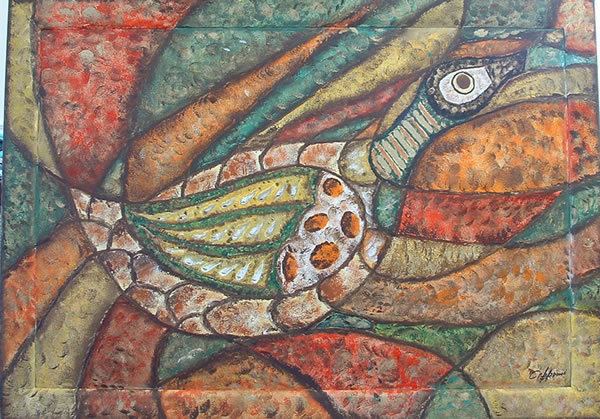 | ||
Multiple artists have used the Vitralism art movement in the last 10 years, see Flickr group.
Contents
Vitralism is 21st-century art movement that uses broken color (similar to Impressionism) and line extension to achieve a "stained glass" look and effect. Light and dark colors are painted in many layers with round sponges (the kind used for a stencil) giving the broken color a transparent quality that simulates the light through a stained glass window. see example painting. The background is done entirely with sponges. The subject may or may not be painted with sponges; brushes are used to paint the subject to create texture contrast.
Line extensions contribute to integrate the painted subject with its background. Acrylic paints are the preferred medium for its fast-drying quality, which prevents the mixing of colors on the canvas and keeps the colors almost pure and separated.
Here are several photos of paintings created using this method
The name Vitralism comes from the Spanish word "Vitral" which means stained-glass. The word vitral comes from the Latin root Vitrum, which means glass.
Characteristics
Some of the characteristics of Vitralism painting include:
Beginnings
While experimenting with acrylic colors for the first time, artist Mele Flórez Avellán started testing the paints on a masonite board. With a base of semi-gloss house paint, she started to apply color to her subject. To her discontent, the brush-applied strokes didn’t stick on the support the way she expected. It was not an opaque covering but semi-transparent. Since Mele already took the time to design her painting, she decided to look around her work area to see what could be used to make this a successful painting. Being a crafty person throughout her whole life, her work area was filled with all sorts of gadgets. She took a stencil sponge, dipped it in paint and lightly touched the support with the sponge. She liked what she saw. The addition of white, silver and gold paints gave the painting more light. The line extensions were then darkened to create a strong contrast.
Techniques
Subjects
Vitralism uses mainly subjects from nature, like birds, leaves and butterflies.
